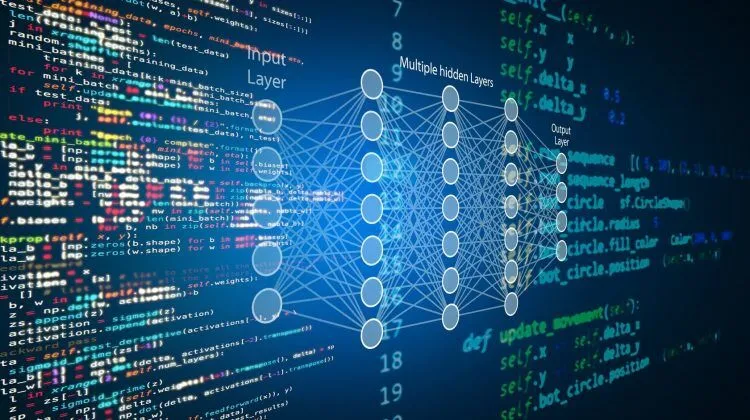
Daria Voronova December 27, 2024
Collected at: https://datafloq.com/read/ai-data-visualization-transforming-mental-health-insights/
Imagine this: Emma, a young woman struggling with anorexia has been seeing her therapist for almost a year. She shows up to her weekly session with a tangled mess of thoughts – moments she forgot to write down, triggers she didn’t have time to explain, and emotions she barely understands herself. For Emma, one hour isn’t enough. For her therapist, it’s hard to connect the dots without knowing what happened between sessions.
This is the reality for millions of therapists and patients. Therapy is powerful, but it’s built on fragmented data. Therapists rely on handwritten notes, vague recollections, and quick check-ins to understand their patients. What happens during the week – the highs, the lows, and the subtle shifts are often lost. For professionals juggling dozens of patients, the picture is incomplete and it is hard to measure the problem between the sessions.
The Problem with Between the Sessions
A therapist like Anna, who sees five patients a day, faces this challenge every session. She asks her patients to log their thoughts, moods and triggers throughout the week, but let’s be real – most people don’t do it. It’s time-consuming, it feels like homework, and patients often forget or avoid it altogether.
When Anna finally reviews what little data she has before the session, it’s scattered and inconsistent. It’s like trying to solve a puzzle with missing pieces. For Emma, this means frustration – she doesn’t see her progress. For Anna, it’s a struggle to understand whether her therapy techniques are working or not.
What if Therapy Could See What Happens Between Sessions?
This is where AI and data visualization come in – not to replace therapists, but to make their work more effective. Imagine an app that works like this:
- Every day, Emma gets a simple push notification asking her to record how she’s feeling.
- Instead of typing long notes, Emma just talks. She records short voice logs, how she responded to food triggers, whether she felt anxious, or what small wins she had that day.
- An AI model listens, analyzing her voice for emotional cues using sentiment analysis and natural language processing, NLP.
The result? Instead of scattered notes, the therapist gets a clear visual dashboard before each session. It shows:
- Emma’s emotional patterns over the week
- Her responses to therapy techniques like CBT or exposure therapy
- How much positive versus negative self-talk she’s experiencing
- How she’s responding to triggers and whether her overall mood is improving.
The Power of Quantifying Progress.
For Anna, this data means she walks into each session prepared. She can see where Emma struggled, where she improved, and what needs focus. Therapy stops being reactive and becomes proactive. Anna can adjust her techniques, optimize the session time, and provide Emma with tools that actually work.
For Emma, seeing her progress in a visual, data-driven way is life-changing. She gains self-awareness. She can identify her own triggers and celebrate her small wins. Therapy feels less like wandering in the dark and more like a guided path to recovery.
Beyond mental health: The bigger picture
While this technology starts with mental health, its applications are vast. For psychiatrists, it can track patients’ responses to medications. For doctors working with stroke patients, AI-powered voice logs can analyze speech recovery and highlight improvements over time.
What we’re building isn’t just a tool for therapy. It’s a way to bring clarity to the invisible data in people’s lives. By quantifying progress, we empower professionals to make smarter, faster decisions while giving patients the visibility they need to heal.
The future of therapy is more than one hour
Emma’s story isn’t unique. Millions of patients and therapists. We live in a digital age and many of us face the same challenges every day. But with AI and data visualization, we can change that.
Therapy doesn’t have to stop when the session ends. Technology can fill in the gaps, giving both therapists and patients the insights they need to make meaningful progress together.
How AI and Data Visualization Redefine Mental Health Progress
Mental health has always been one of the hardest areas to measure. While physical conditions like cancer or heart disease can be tracked through tests and scans, mental health progress often feels elusive, relying on scattered notes, subjective observations, and guesswork. This lack of clarity leaves both therapists and patients struggling to understand what’s truly helping.
By combining AI and data visualization, we’re making it possible to measure progress in ways that were never possible before. Patterns, trends, and insights that were once invisible are now easy to see, helping therapists tailor their care more effectively. For patients, this isn’t just about data. It’s about seeing their progress clearly, gaining confidence in their recovery, and feeling more in control.
Beyond individual care, this approach opens the door to better research, helping the mental health field evolve with the same precision as physical medicine. AI and data visualization aren’t replacing the human connection in therapy. They’re enhancing it. Together, they’re helping us turn something as abstract as mental health into something we can track, improve, and truly understand.

Leave a Reply